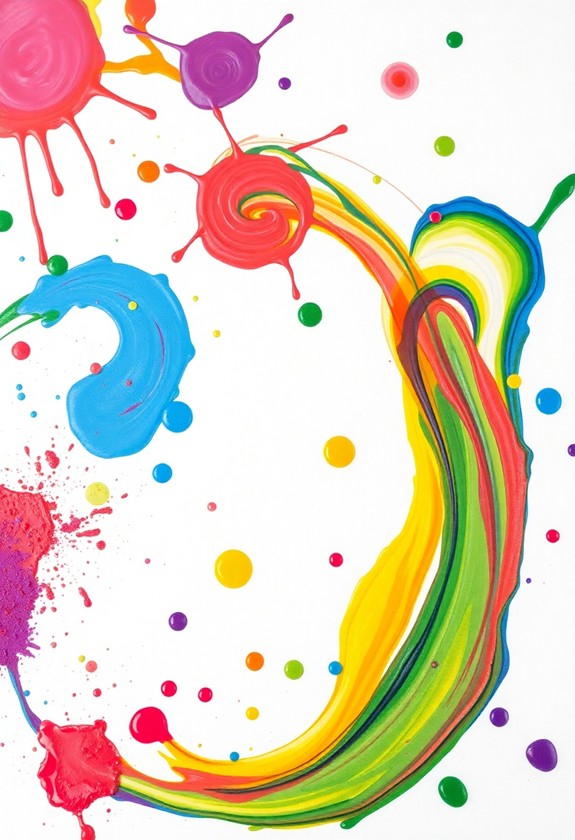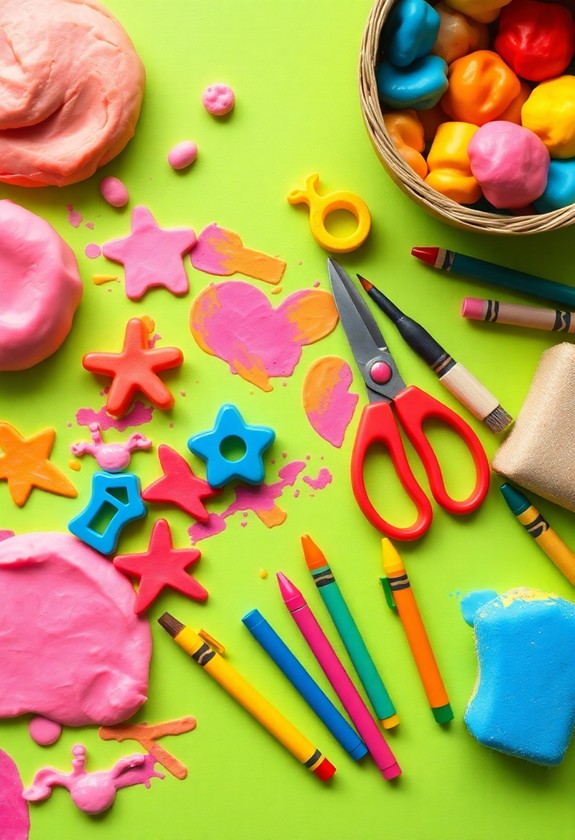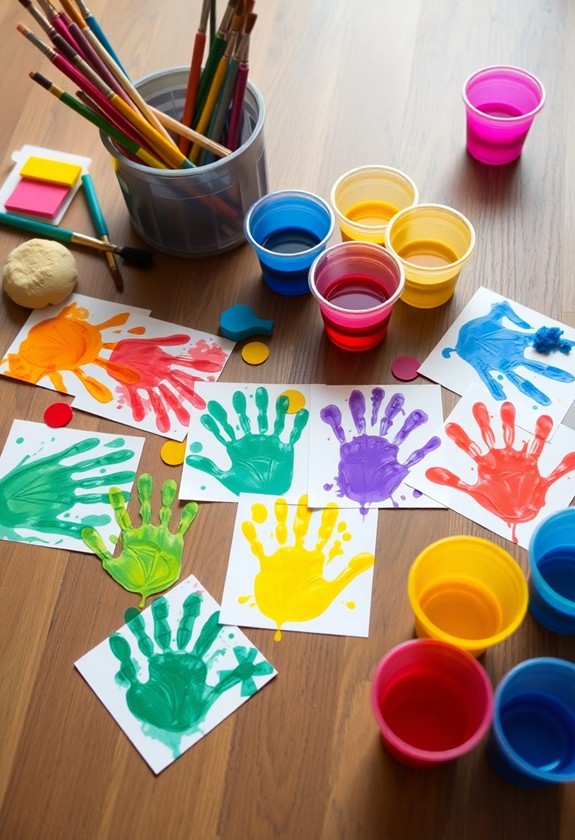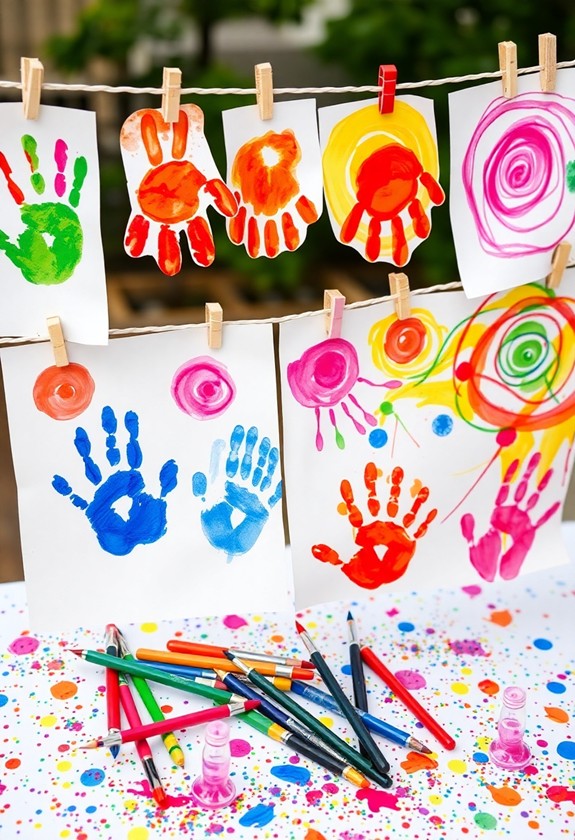Sensory art experiences are vital for your toddler's development, offering a fun and engaging way to stimulate their senses and encourage creativity! Try these exciting activities: finger painting, textured collage creation, scented play dough sculpting, squishy sensory bags, edible art projects, bubble wrap printing, water color ice painting, shaving cream marbling, and nature texture rubbings. Each activity engages different senses and skills, from fine motor development to cognitive growth. Your little one will love squishing, squeezing, and discovering various textures and materials. These hands-on experiences not only spark imagination but also promote problem-solving and emotional expression. Get ready for a world of colorful, messy fun that'll have your toddler begging for more!
Creative Highlights
- Finger painting engages multiple senses, develops fine motor skills, and encourages creative expression without restrictions.
- Edible art projects combine creativity with sensory exploration, stimulating taste, texture, and color senses simultaneously.
- Textured collage creation enhances fine motor skills, stimulates creativity, and fosters vocabulary development through diverse materials.
- Nature texture rubbings promote sensory awareness, develop fine motor skills, and facilitate discussions about colors, shapes, and natural textures.
- Scented play dough sculpting aids memory retention, encourages creativity, and expands vocabulary while identifying smells and shapes.
Finger Painting Fun
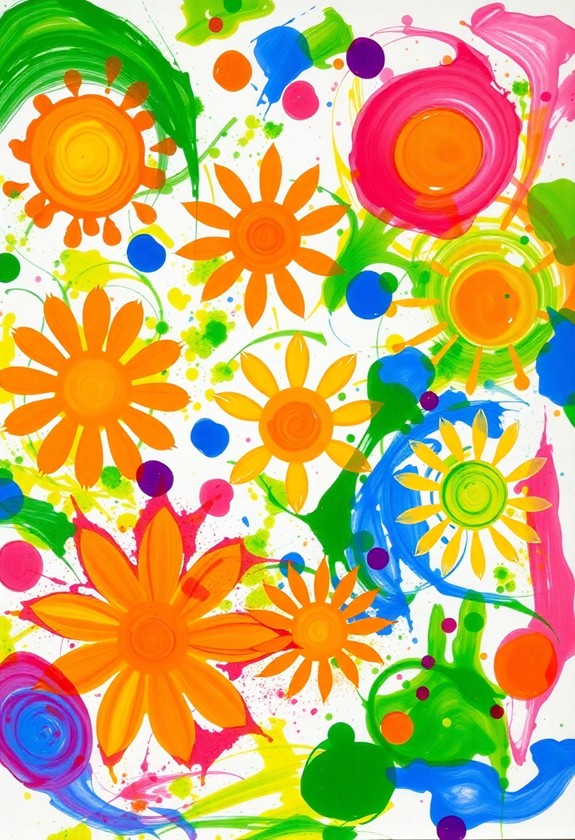
One of the most engaging and messy sensory activities for toddlers is finger painting. It's a blast for little ones and helps develop their fine motor skills too! Here's why you should give it a try:
- Sensory explosion: Squishy paint between tiny fingers is a tactile delight!
- Color mixing magic: Watch their eyes light up as colors blend
- Artistic expression: No rules, just fun and creativity
Finger painting additionally encourages creativity and problem-solving, crucial cognitive skills for toddlers. It's a fantastic way to promote emotional expression through art.
To get started:
- Cover your workspace (and your toddler) in old clothes or a smock
- Use washable, non-toxic paints
- Provide large paper or a smooth surface
- Let them go wild!
Textured Collage Creation
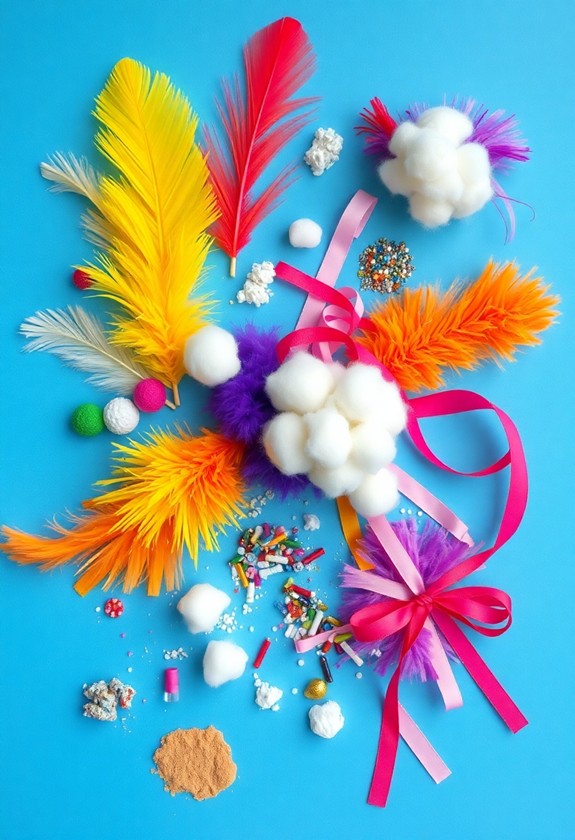
Even though finger painting offers messy fun, textured collage creation provides a different sensory experience that's likewise exciting for toddlers. It's time to get tactile! Gather an array of materials with various textures:
- Soft fabric scraps
- Rough sandpaper
- Smooth pebbles
- Crunchy leaves
This activity not only improves fine motor skills but also promotes creativity and problem-solving as toddlers investigate different textures and decide how to arrange them. Now, let's stick 'em up! Provide your little one with a sturdy piece of cardboard and some child-safe glue. Watch as they examine the feel of each item before deciding where to place it. This activity isn't just about creating art—it's a texture-tastic adventure! Your toddler will develop fine motor skills as they manipulate different materials and learn about adhesives. Plus, they'll broaden their vocabulary as you discuss the sensations: "Ooh, that's bumpy!" or "Wow, so silky!" Get ready for a touchy-feely masterpiece that'll have everyone saying, "Texture me impressed!"
Scented Play Dough Sculpting
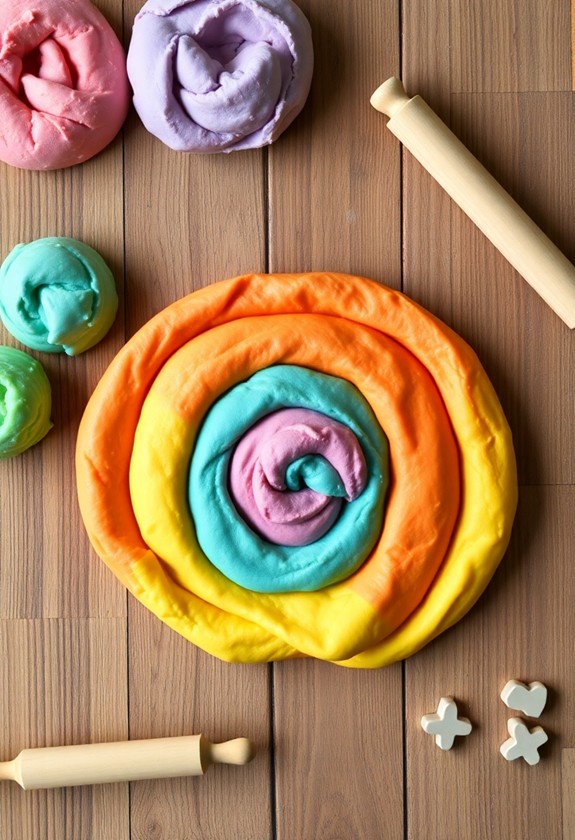
From touch to smell, let's awaken another sense with scented play dough sculpting. This activity is a sensory explosion for your little one! You'll need:
- Homemade or store-bought play dough
- Natural scents (vanilla extract, cinnamon, lemon juice)
- Safe tools for sculpting
Mix a few drops of scent into the dough and watch your toddler's eyes light up! They'll knead, roll, and mold as their nose twirls with delight. This multi-sensory experience aids in memory retention and information processing, vital for early childhood development. Regular crafting stimulates brain regions associated with problem-solving, creativity, and motor skills. Encourage them to create:
- Fruity friends
- Spicy shapes
- Sweet-smelling animals
This odoriferous adventure isn't just fun – it's brain food! Your child will develop fine motor skills, creativity, and sensory recognition. Plus, it's a great way to introduce new vocabulary. "Is that a cinnamon snake or a vanilla volcano?" The possibilities are end-scent! So, get ready to sculpt up some scent-sational memories with your little artist!
Squishy Sensory Bags
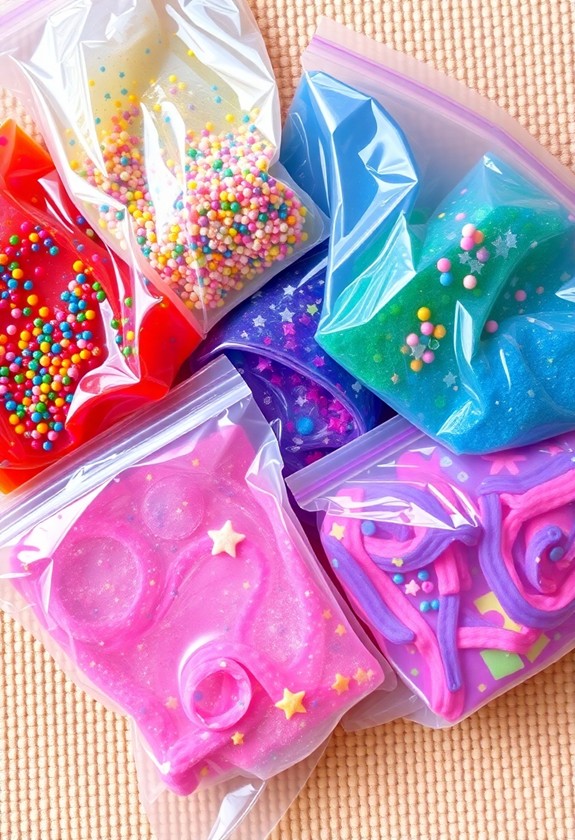
Squishy sensory bags offer a tactile wonderland for curious toddlers. These mess-free, sealed bags are filled with colorful gels, oils, and small objects that squish and move when touched. They're a hit with little hands!
To make your own:
- Fill a zip-lock bag with hair gel or clear glue
- Add glitter, small toys, or food coloring
- Seal tightly and reinforce with tape
Watch your tot's eyes light up as they squish, squeeze, and investigate! These bags are perfect for developing fine motor skills and sensory awareness. Plus, they're a great way to introduce colors and textures.
Pro tip: Tape the bags to a window or table for mess-free, vertical play. It's like a squishy, tactile TV show for tiny fingers! Your little one will be squishing their way to sensory success in no time.
Edible Art Projects
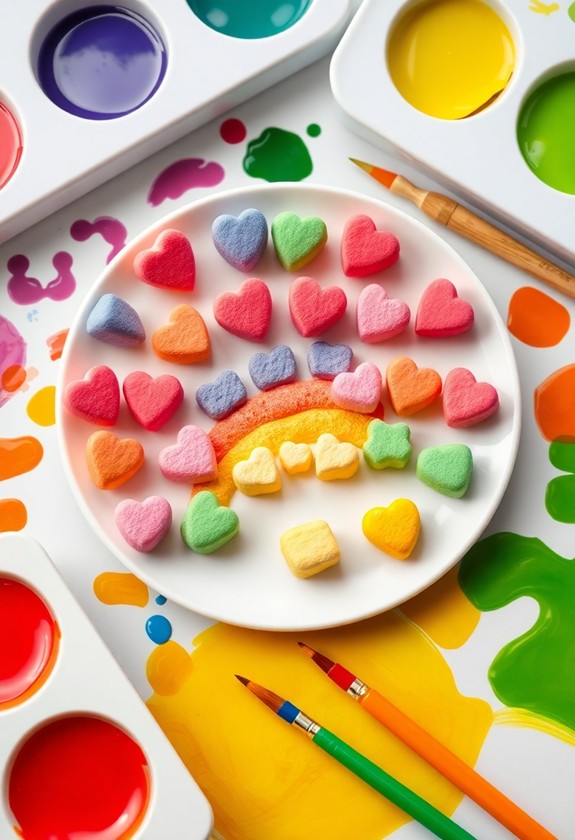
Edible art projects offer a delightful way for toddlers to examine creativity and sensory experiences. You'll love watching your little one investigate taste, texture, and color all at once! Here are some fun ideas to try:
- Fruit and veggie painting: Use sliced produce as stamps!
- Yogurt finger painting: Mix food coloring into yogurt for a tasty canvas.
- Jell-O sculpture: Mold wiggly creations with different flavors.
These activities aren't just fun—they're fantastic for development! Your toddler will:
- Improve fine motor skills
- Stimulate multiple senses
- Build creativity and imagination
Plus, it's a sneaky way to introduce new foods. Who knew art could be so delicious? Just remember to supervise closely and choose age-appropriate ingredients. Get ready for a mess-terpiece of fun and learning!
Sand Art Adventures
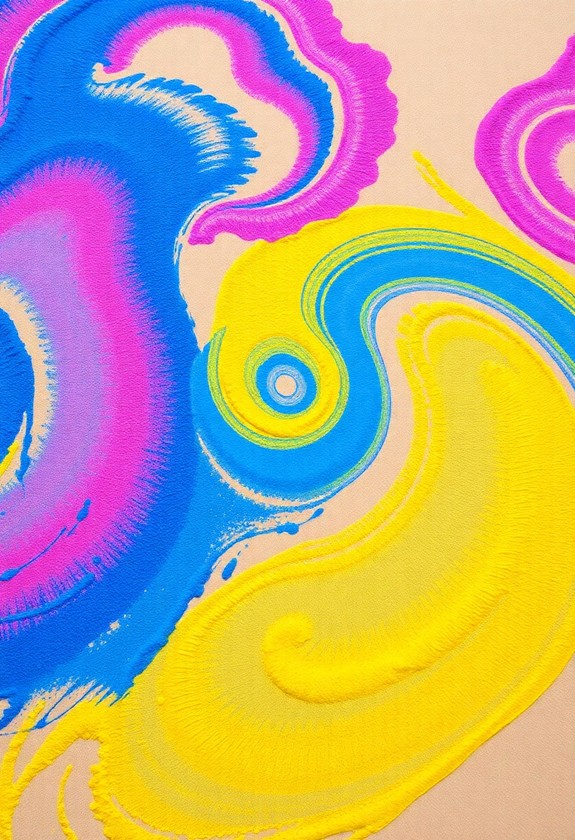
Exploration takes on a new dimension with sand art adventures for toddlers. It's time to dig into this grainy goodness! You'll love watching your little one's face light up as they squish, pour, and mold colorful sand. But wait, there's more!
Here are some sandy ideas to try:
- Create a mini beach in a tray
- Make sand bottles with layers of different colors
- Use cookie cutters to shape sand "cookies"
Don't forget to add tools like:
- Small shovels and rakes
- Funnels for pouring
- Molds in fun shapes
Sand play isn't just fun, it's fantastic for developing fine motor skills and sensory awareness. Plus, it's a great way to introduce concepts like texture, weight, and volume. So, get ready to have a sand-sational time with your toddler!
Bubble Wrap Printing
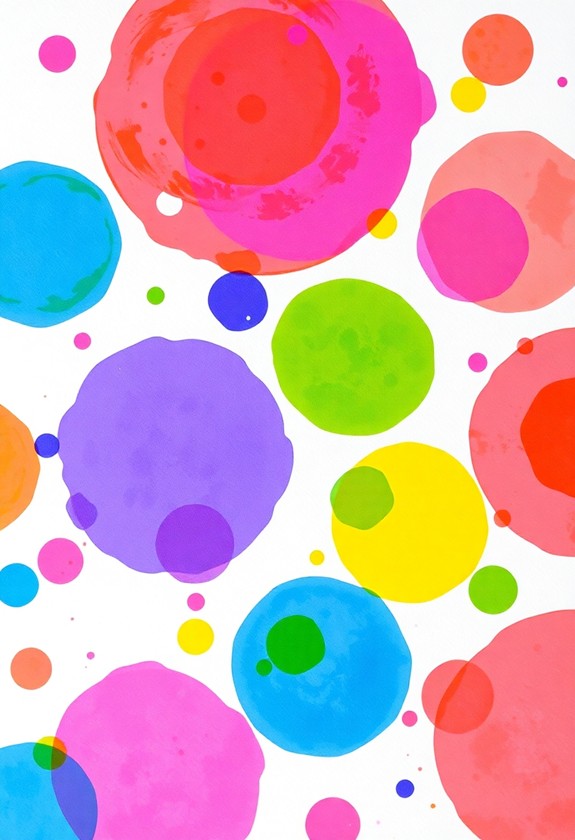
Pop, squish, and paint! Bubble wrap printing is a fantastically fun and messy way to engage your toddler's senses. It's time to turn those packing materials into mini masterpieces! Here's how to get started:
- Gather supplies: bubble wrap, paint, paper, and a flat surface
- Cut bubble wrap into manageable sizes
- Pour paint onto a tray or plate
- Let your little one dip the bubble wrap into the paint
- Press the painted bubble wrap onto paper – watch the magic happen!
Your toddler will love the tactile sensation of popping bubbles and the visual delight of creating unique patterns. This activity isn't just a blast – it's additionally great for developing fine motor skills and hand-eye coordination. Plus, it's a "popping" good time for creativity! So, let's get bubbling and watch your child's artistic skills "wrap up" nicely!
Water Color Ice Painting
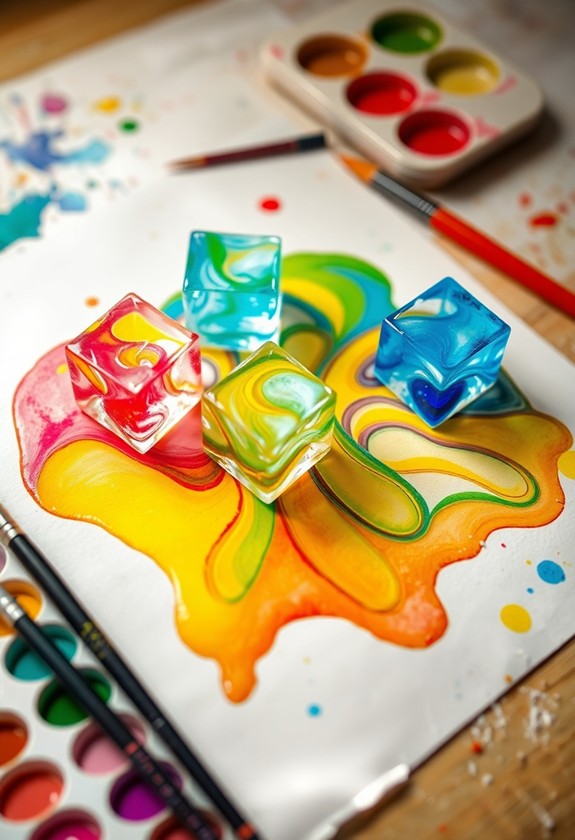
With a splash of color and a cool twist, water color ice painting offers a rejuvenating sensory experience for toddlers. It's a frosty fun way to examine art and temperature!
Here's how to get started:
- Mix water and food coloring in ice cube trays
- Freeze overnight
- Pop out the colorful cubes
- Set up paper on a tray or outside
Now, let your little Picasso go wild! They'll love the chilly sensation as the ice melts, leaving behind lively streaks of color. It's like magic! Watch their eyes light up as they unearth how the ice transforms into paint.
This activity isn't just a blast – it's additionally great for developing fine motor skills and color recognition. Plus, it's a cool way to beat the heat on a hot day. So, grab those ice cubes and let the icy artistry begin!
Shaving Cream Marbling
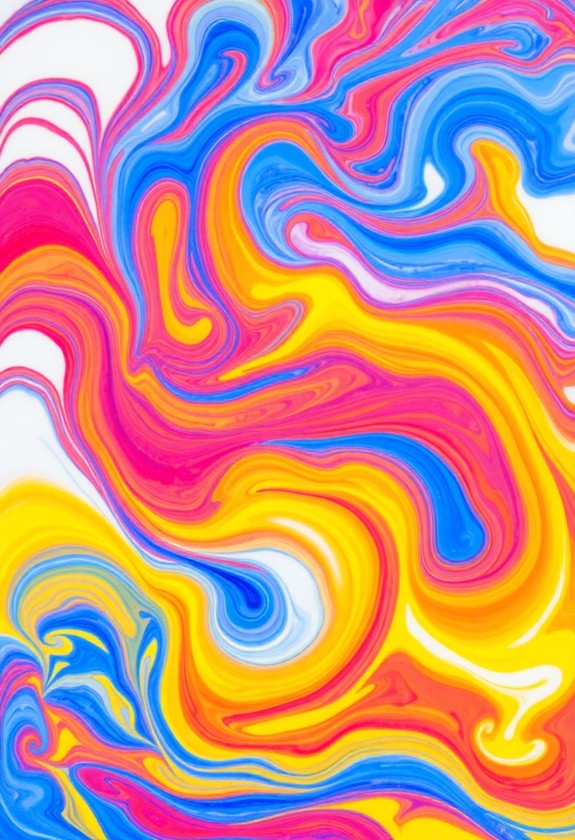
From icy artistry to foamy fun, shaving cream marbling offers toddlers another exciting sensory experience. It's time to get messy and creative! Here's how to do it:
- Squirt shaving cream onto a tray
- Smooth it out with a spatula
- Drop food coloring or liquid watercolors onto the cream
- Let your little one swirl the colors with a stick or finger
- Press paper onto the marbled cream
- Scrape off excess foam to reveal a beautiful design
Watch your toddler's eyes light up as they create swirly, whirly masterpieces! This activity is a feast for the senses – touch, sight, and even smell. It's not just fun, it's foamentally important for development! Shaving cream marbling helps improve fine motor skills, color recognition, and sensory processing. Plus, it's a great way to introduce basic scientific concepts like color mixing. Get ready for some foam-tastic fun!
Nature Texture Rubbings
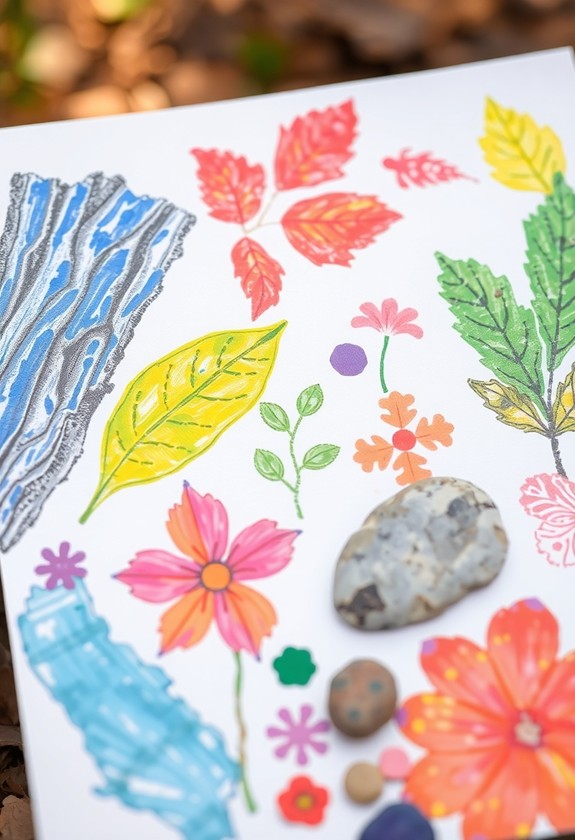
Let's step outside and examine the textures of nature! This activity is a blast for toddlers and helps them investigate the world around them. Here's what you'll need:
- Crayons (with paper removed)
- White paper
- Clipboard or firm surface
Now, it's time to get rubbing! Follow these easy steps:
- Find interesting textures (tree bark, leaves, rocks)
- Place paper over the textured surface
- Rub the side of the crayon over the paper
Watch as patterns magically appear! Your little one will be amazed at how different objects create unique designs. This hands-on experience develops fine motor skills and sensory awareness. Plus, it's a great way to talk about colors, shapes, and nature. So, grab those crayons and get ready for a texture-tastic adventure!
Curious Little Questions
How Can I Make Sensory Art Experiences Safe for Children With Allergies?
You've got this! To make sensory art safe for allergic kiddos:
- Check ingredients: Read labels carefully!
- Use allergen-free materials: Look for hypoallergenic options
- Clean up: Wash hands and surfaces thoroughly
- Communicate: Talk to parents about specific allergies
- Supervise: Keep a close eye on little artists
- Be prepared: Have an action plan for emergencies
Get creative with safe alternatives like rice, pasta, or colorful pom-poms! Remember, safety first, but fun's a close second! With these tips, you'll create a worry-free artsy paradise for all your tiny Picassos!
What Age Is Appropriate to Start Introducing Toddlers to Sensory Art?
Did you know that 90% of a child's brain development happens before age 5? That's why it's never too early to start sensory art! You can introduce your little one to these experiences as young as 6 months old. At this age, they're curious and ready to investigate. Start with simple, safe activities like finger painting or playing with edible "paint." As they grow, you can introduce more complex textures and materials. Remember, it's all about fun and revelation!
How Do I Clean up After Messy Sensory Art Activities?
Cleaning up after messy sensory art? You've got this! Start by:
- Laying down old newspapers or a plastic tablecloth beforehand
- Keeping wet wipes handy for quick clean-ups
- Using washable paints and materials
When you're done, it's time to:
- Gather all the art supplies
- Wipe down surfaces with soapy water
- Sweep or vacuum any dry messes
Don't forget to make cleanup fun! Turn it into a game or sing a silly cleanup song. Remember, a little mess means a lot of creativity!
Are There Any Sensory Art Projects Suitable for Children With Sensory Sensitivities?
There are plenty of sensory-friendly art projects for kids with sensitivities. You can try:
- Finger painting with shaving cream – it's smooth and cool!
- Creating collages with soft fabrics – so cozy!
- Molding scented playdough – smells great!
- Drawing with crayons on textured paper – feels interesting!
These activities are gentle on the senses but still super fun! Remember, you can always adjust materials to suit your child's preferences. Let them investigate at their own pace, and don't forget to join in the creative fun!
What Benefits Does Sensory Art Provide for Toddlers With Special Needs?
Did you know that 1 in 6 children has a developmental disability? Wow! For toddlers with special needs, sensory art is a game-changer! It's not just fun, it's fantastic for their growth. You'll see:
- Improved motor skills
- Better sensory processing
- Enhanced communication
- Boosted self-expression
Plus, it's a blast! Your little one will love squishing paint, molding clay, and creating masterpieces. It's like a workout for their senses and creativity. So, grab those art supplies and let the sensory adventure begin!

